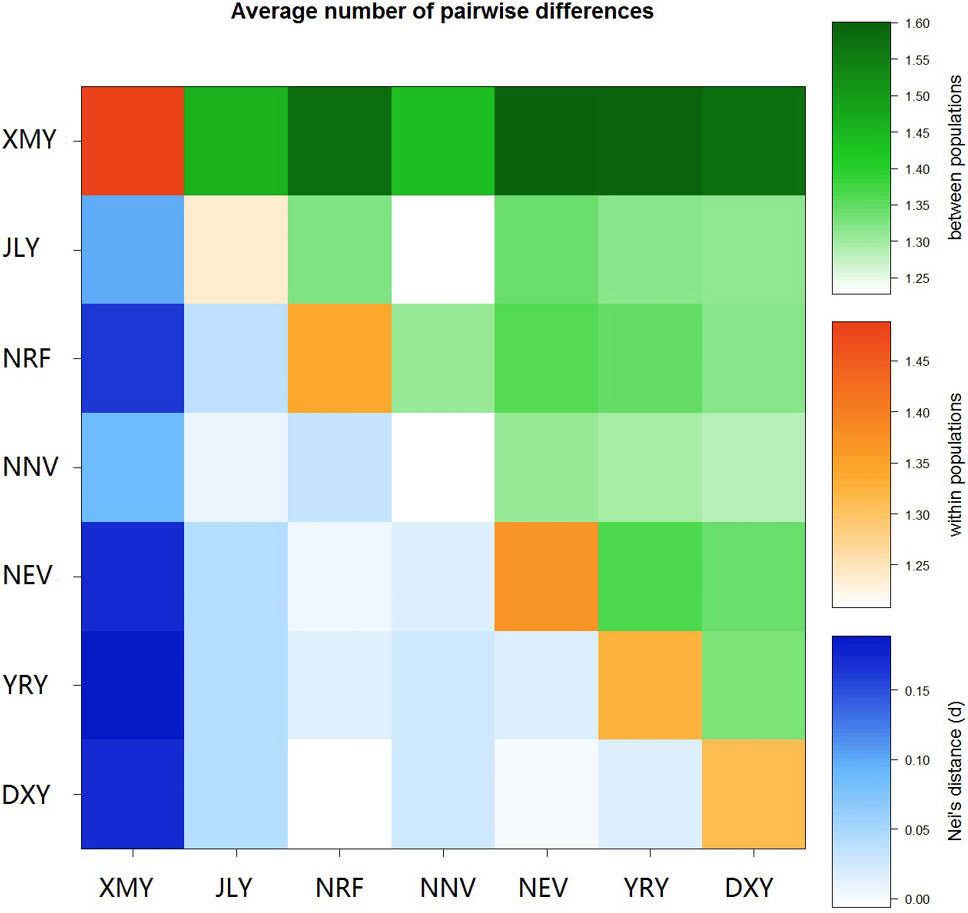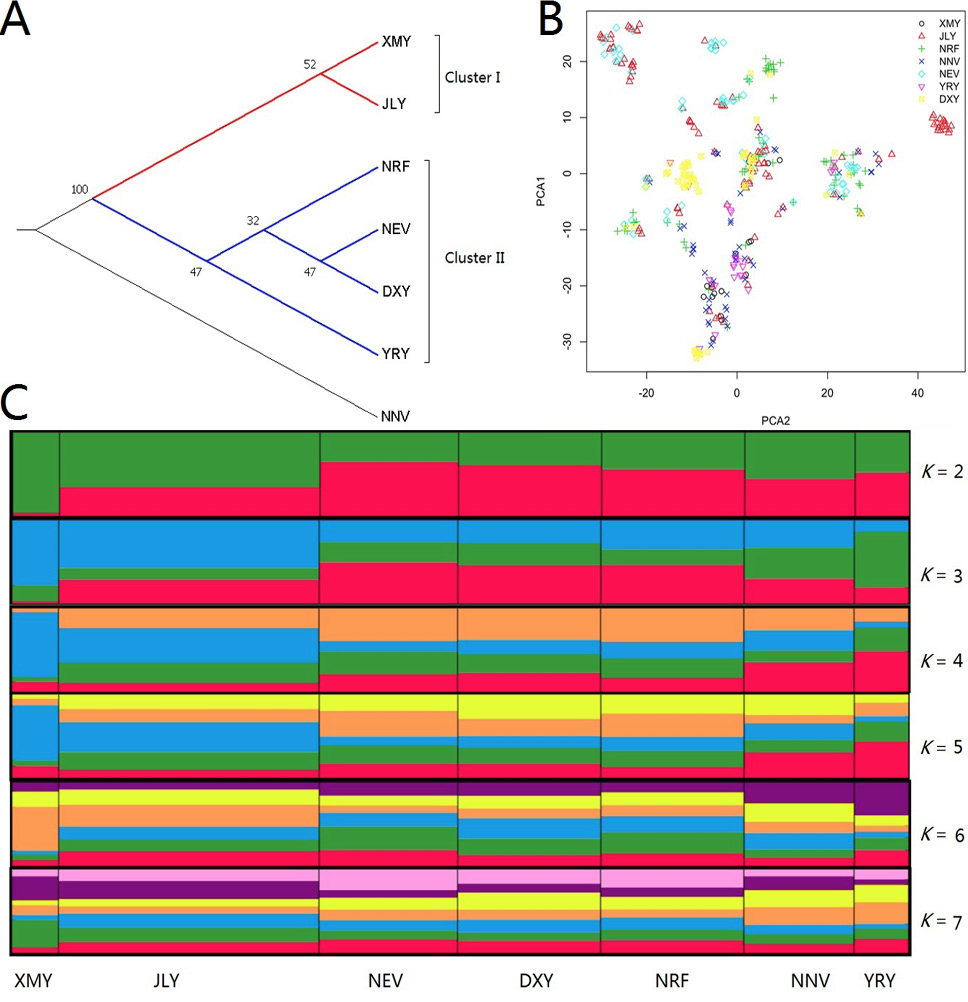Genetic Diversity and Population Structure of Seven Tibet Yak Ecotype Populations using Microsatellite Markers
Genetic Diversity and Population Structure of Seven Tibet Yak Ecotype Populations using Microsatellite Markers
Yan-Bin Zhu1, Wang-Dui Basang1, Zhan-Dui Pingcuo1, Yang-Ji Cidan1, Sang Luo1, Dun-Zhu Luosang1, Yang-La Dawa1 and Guang-Xin E2,3,*
Pairwise differences analysis between seven yak populations. About pairwise differences analysis as (1) above diagonal: average number of pairwise differences between populations (πXY); (2) Diagonal elements: average number of pairwise differences within populations (πX); and (3) Below diagonal: corrected average pairwise differences (πXY-(πX+πY).
Phylogenetic population structure of seven Tibet local yak populations. A, Phylogenetic network of 7 yak populations by Reynold’s genetic distance; B, PCA pattern of 382 Tibet yak individuals from 7 populations; C, Cluster diagrams of 7 yak populations obtained using STRUCTURE.












